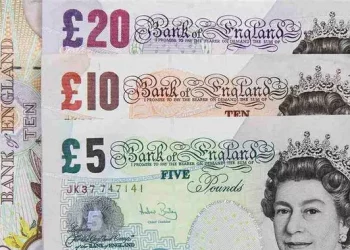The Japanese Yen (JPY) remained steady on Friday following the release of Japan’s foreign reserves data for May by the Ministry of Finance, which showed a significant decline to $1,231 billion from $1,279 billion in April, marking the lowest level since February 2023. This drop is attributed to the government’s foreign exchange intervention efforts to support the JPY.
Japanese Finance Minister Shunichi Suzuki emphasized the government’s commitment to addressing excessive currency volatility, stating that there is no limit to the funds available for foreign exchange intervention. Suzuki underscored the importance of maintaining market trust in public finances and promised to evaluate the effectiveness of any interventions.
US Dollar Struggles Amid Lower Employment Data and Rate Cut Speculations
The US Dollar (USD) faced challenges as weaker employment data from the United States fueled expectations of two interest rate cuts by the Federal Reserve in 2024. A Reuters poll conducted from May 31 to June 5 revealed that nearly two-thirds of economists now predict an interest rate cut in September. Additionally, the CME FedWatch Tool shows a rise in the probability of a Fed rate cut by at least 25 basis points in September to nearly 70%, up from 51% a week earlier.
Market Movers: Japanese Yen Steady Ahead of US Labor Data
Japanese bond yields have receded from recent highs, with the benchmark 10-year government bond yield falling below 1% for the first time in two weeks. US Initial Jobless Claims increased by 8,000 to 229,000 for the week ending May 31, exceeding market expectations of 220,000.
Bank of Japan (BoJ) Governor Kazuo Ueda noted that while inflation expectations are rising, they have not yet reached the 2% target. He indicated that the BoJ is scrutinizing market developments and may reduce bond purchases as it exits its massive monetary stimulus. BoJ board member Toyoaki Nakamura also mentioned that current data supports maintaining the current policy.
The ISM US Services PMI surged to 53.8 in May, its highest level in nine months, surpassing the forecast of 50.8. Conversely, the ADP US Employment Change report indicated that 152,000 new workers were added to payrolls in May, the lowest in four months and below the forecast of 175,000.
In Japan, the Jibun Bank Japan Services PMI was revised upward to 53.8 in May from 53.6, although it remained below April’s 8-month peak of 54.3, indicating the slowest growth in the service sector since February.
Technical Analysis: USD/JPY Consolidates Around 155.50
USD/JPY traded around 155.80 on Friday, showing a sideways trend as the pair consolidates within a symmetrical triangle pattern. The 14-day Relative Strength Index (RSI) is slightly below the 50 level, suggesting a bearish inclination.
Immediate support for the USD/JPY pair is at the psychological level of 155.00, with additional support at the 50-day Exponential Moving Average (EMA) of 154.73. A break below this level could increase downward pressure, potentially pushing the pair towards the support region around 151.86.
On the upside, resistance is noted at the upper threshold of the symmetrical triangle at 156.80. A breakout above this level could diminish the bearish bias and lead the pair to test the psychological barrier of 157.00, followed by 160.32, its highest level in over thirty years.
Summary
The Japanese Yen remains stable following a significant drop in foreign reserves, while the US Dollar struggles with weaker employment data and expectations of rate cuts. Technical indicators suggest a consolidation phase for USD/JPY, with potential support and resistance levels guiding future movements.
Related Topics:























